Why the pear does not bear fruit: the main reasons
Every gardener strives to plant as many fruit trees as possible on his personal plot. This desire is fully justified by the fact that you want to get all the fruits and berries from your own garden to the maximum in the summer.
One such culture is pear... Before planting, you should decide on the variety and taste that you would like to get from the fruit. In addition, there is a significant drawback during the cultivation of pears - they can stop bearing fruit. It is important to determine the reason in order to restore the plant's ability to please others with a good harvest.
Content:
- The best pear varieties for growing
- The pear does not bear fruit - the reason: disease
- What to do, how to cure a tree?
- Pear does not bear fruit - reason: pests
- What to do, how to get rid of them?
- Other reasons why a pear does not bear fruit
- Gardening tips: how to properly care for a pear
The best pear varieties for growing
The main thing before planting a pear is to decide what kind of appearance the fruit should have, and in what time frame its readiness is required. It is best to plant several types of plants on your territory: early, mid-season and late. When planting all types, the delicious fruits can be consumed throughout the summer and even in early autumn.
The next point to choose the optimal varieties is to decide on the appearance of the tree - it should be tall, columnar, dwarf or medium-sized.
After several suitable options have been selected, it is necessary to check the ability of the trees to grow well, their care and the requirements for planting.
Here you need to provide for all the nuances:
- What kind of soil is right.
- Near or distant location of groundwater.
- Soil acidity.
- The optimal choice of planting site.
- suitable growing conditions - frost resistance and aridity.
Only after that is it worth choosing the most suitable option for planting a cultivated plant with fruit-bulbs. There are the following types of pears that bear fruit in the summer:
- Cathedral - ripens in the last month of summer - in early August. The fruits are not large, reach up to 100 grams in size, from the moment of full formation to ripening, a long period does not pass. It has a slightly sour taste, but leaves a sweetish aftertaste after consumption. Practically immune to diseases and parasitic insects.
- Chizhovskaya is a self-fertile variety. Ripens at the end of summer. It tolerates frost well and practically does not perceive various diseases. It appears with a greenish-pink tint. Has a sour-sweet taste. After planting, the appearance of the first fruits should be expected only in the 3rd year.
- August dew is characterized by low growth, which often equates it with dwarf trees. The variety is quite fruitful, it tolerates a strong decrease in temperature to -25 C.The pulp of the fruit is whitish, juicy in taste, dense in structure. The taste is distinguished by a sweet shade with a slightly sour aftertaste. It should be removed from the tree at the end of August in a green form, while the fruits settle down, acquiring a yellowish tint.
Among the autumn varieties, the highest quality fruits with excellent taste are distinguished:
- Moskvichka - is an early autumn variety. In terms of size, the culture cannot boast of large sizes, but its skeletal branches differ in power and branching. The appearance of pears is presented in a pale yellow shade with green, while on the fruits there are slight inclusions of a light green shade. The fruits hold well on the branch, do not fall off, only during a period of prolonged drought can the plant throw off all the fruits. Fully ripe pears are well transported and stored for a long period.
- Yakovlev's favorite - fruiting begins only from the fifth year after planting, the amount of the harvest is growing every year. The fruits are distinguished by a sweetish taste with a slight sourness, they feel like quince fruits, but there is no astringency. Readiness occurs in the middle of the first month of autumn.
- Elegant Efimova - have an original color - a reddish tint. Harvesting requires production as it ripens, it is not recommended to overexpose on a branch, the fruit loses its taste. The beginning of the harvest is the last days of August and the whole of September.
Among winter types of pears, Prosto Maria and Olivier de Serre stand out. The latter is characterized by increased winter hardiness. External qualities do not greatly interest the consumer - the fruit looks like a small ball with tubercles, but at the same time the variety has excellent and unique taste. The pulp is dense, juicy, well suited for long-term storage, transportation over long distances and as canning for the winter.
Simply Maria - the fruits are characterized by a green-yellow tint, with a slight pink blush. Has a sweet and sour taste, has a strong aroma. The peel of the pear is rather dry, but the juicy oily pulp compensates for the lack.
There are a large number of pear varieties, only those that differ in specific and original taste and good winter hardiness are highlighted.
The main thing is to decide on the main points of care and landing before landing. Only then begin to root the seedling. Without suitable conditions, the plant will be sick for a long period, and in the future it will develop poorly and give a meager low-quality crop.
The pear does not bear fruit - the reason: disease
If the planting was carried out according to all the rules and the seedling, having taken root, gave the first harvests, but suddenly stopped bearing fruit. The reasons should be looked for either in the care of the plant or within the culture, perhaps the problem was spread on the branches or in root system pathogenic bacteria that cause various diseases.
There are the following diseases that can affect the pear tree:
- Scab - by the first signs, you can determine the disease. With a disease on the underside of the leaf plate, the appearance of minor spots of an olive shade is recorded. At the same time, there is hairiness and a characteristic velvety bloom on these darkening. If the fruits are already available and the effect against the disease is not accepted, then the fruits are affected in the future. They begin to darken and crack.
- Fruit rot - rot spots appear on the fruit. They grow rapidly around the perimeter of the fruit, and after a week this fruit cannot be eaten or preserved from the fruit. This disease is provoked by heat and lack of watering. It prevails from mid-July to late August. If the disease is not treated in time, the fungus can move to the branches of the culture;
- Powdery mildew - white dusting appears on the leaves, which can be easily erased by hand. If you do not act, then the plaque eventually becomes a reddish hue, the foliage begins to curl and fall off the branches. The disease is spread only to young seedlings and appears during the period of bud growth until the leaf plate is fully formed.
- Rust - the causative agent is a pathogenic fungus. Bulging, yellow-orange spots appear on the leaves and fruits. In most cases, the disease intensifies in late April and early May.
- Stem rot - damage appears on the trunk of the pear. The disease is provoked after a tree receives sunburn or a major freezing of the trunk during a strong drop in temperatures in winter. The bark begins to exfoliate, dry out and move away from the trunk, while acquiring a reddish-brown tone.
To avoid the overgrowth of the disease, the plant should be constantly monitored. When the first symptoms appear, it is recommended to take effective measures to treat or remove damaged parts.
What to do, how to cure a tree?
To eliminate diseases, it is recommended to influence the pear in various ways. To begin with, try to eliminate the problem using folk methods. If the result does not follow, then it is worth using more serious drugs - chemical insecticides.
For the treatment of various diseases, certain measures should be taken:
- Rust - remove all diseased fruits and foliage from the tree, carry it away from the tree, or completely burn it. To eliminate the first signs of the disease, it is worth spraying the branches and trunk with a solution of copper sulfate, ammonium nitrate, as well as infusions of horsetail, wood ash and marigolds... As a preventive measure, it is recommended to irrigate trees in early spring with a 1% solution Bordeaux mixture.
- Fruit rot - all affected fruit should be removed. In the spring, it is required to spray the shrub with 1% Bordeaux liquid.
- Stem rot - damaged areas are removed from the tree, covered with pitch or clay. In autumn, it is imperative to whitewash the trunks and remove dry or damaged branches.
- Scab - as a preventive measure, it is recommended to spray Bordeaux liquid 3 times a season. It is imperative to thin out the internal thickening of the branches so as not to provoke the emergence of pathogenic bacteria. Fallen damaged fruits are removed, the foliage is to be burned. If the crop is heavily infested, it should be irrigated with Skor.
- Powdery mildew - all damaged areas are eliminated and burned. The tree should be treated with Fundazol or a solution of liquid soap with soda ash.
Thus, in order for the tree to bear fruit and bear only high-quality and tasty fruits in the spring, it is recommended to treat the crop with chemical insecticides against diseases.
Pear does not bear fruit - reason: pests
Not only pathogenic bacteria can provoke the reason for the lack of fruit. Pears can also be attacked by pests. The following parasitic insects are distinguished, capable of provoking the fall of not only fruits, but also foliage from trees:
- Fruit gall midge - in an adult form, does not pose a danger to the plant. Its larvae cause irreparable damage to the culture. The most dangerous pests are young seedlings and those plants that have been pruned. It populates mainly in plant tissue, and parasitizes in the ovary, feeding on the pulp of the fruit.
- Sawfly - Females infect the ovary by laying one egg inside the bud, thereby damaging the receptacle and sepal. The larvae feed on the core of the fruit. During the summer period, one larva is capable of destroying up to 4 cores.
- Brown tick - falling on a tree, they form galls in the tissues of the leaf plates or completely damage the leaf tissue, forming a swelling in the affected area. After eating up the juice by parasites, the leaf turns black and falls off.
- Hawthorn butterfly - the appearance of mummified leaves on a tree means that a parasitic butterfly hibernates in the middle. The young larvae hatched in the spring actively destroy all the tender leaves that have grown on the pear.
In order not to lose the harvest, it is recommended to know all the parasites in person, in order to start active influence on them in time. When both small and large numbers appear, measures should be taken to eliminate parasitic individuals. Otherwise, there is an opportunity not only to lose the harvest, but also to ruin the young tree.
What to do, how to get rid of them?
To remove parasites, you should constantly monitor your own plantings. The primary appearance is easy to eliminate by simply crushing the insect or larva by hand, but if the infection has occurred inside the bud or by other methods of exposure, radical methods of control are needed:
- If a hawthorn butterfly appears on the tree, you should first manually remove all twists from the leaves, and then spray the plant with a garlic solution.
- If a tick appears on the plant, first of all, you need to remove all fallen leaves from under the tree and burn all of them. In the fall, it is worth digging up the soil near the trunk circle in order to dig out all the parasites that have settled in the soil.
- With a pear gall midge and a sawfly, you need to manually collect all the parasites and their larvae, throw them on a covered diaper or oilcloth under a tree.
Additionally, it is recommended to act with Karbofos, Antio, Phosphamide or Zolone. All actions should be performed in the spring.
Other reasons why a pear does not bear fruit
In addition to parasites and various diseases, the pear can suffer from other causes. The latter do not allow the plant to develop normally and give a good harvest.
There are the following reasons why the pear does not bear fruit:
- Lack of sufficient sunlight - the pear prefers sunlight, in the shade they cannot form flowers and withstand the ovaries.
- The disadvantage of varietal pollinators is that not every variety is capable of pollinating on its own. To do this, it is necessary to plant 2-3 seedlings on the site. If there is no possibility of additional planting, it is worth planting an additional variety on one branch that can pollinate the plant.
- Depleted soil and improper fertilization - not a single cultivated plant can produce a high-quality crop on poor soil. Top dressing will not help if they are applied in an insufficient or excessive amount and at the wrong time for this.
- Incorrect planting of a seedling - when planting, there is a possibility of not planting correctly, while choosing a poor planting site and a close location of groundwater.
- Strong pruning - in the case of abundant spring elimination of excess parts of the tree, you can provoke a lack of flowering.
Thus, you should know the methods of growing and caring for the plant so that the pear gives abundant yields and grows into a gorgeous tree.
Gardening tips: how to properly care for a pear
Although a pear and an unpretentious plant, a kind of care is required for it. It requires constant exposure to the gardener. The following rules for plant care are distinguished:
- Pruning - carried out both in the spring (rejuvenating, sanitary), in the summer (elimination of damaged branches and fruit-bearing branches), as well as in the fall - pruning of excess growth, crown formation and elimination of thickening.
- Shelter and removal of shelter after winter is mandatory for the winter, especially for young seedlings, a warming procedure should be carried out. In the spring, when the heat comes, you need to remove everything so as not to provoke rotting of the trunk and kidneys.
- Fertilization - in the spring it is very important to add potassium, phosphorus and nitrogen at the time of flowering. The latter at this moment is extremely necessary for the growth of green mass and abundant budding.But do not overdo it with dressings, they can stimulate an abundant build-up of green mass, but a complete lack of fruit.
- Watering - for young seedlings, watering is necessary as the soil dries out under the rhizomes. For older plants, irrigation with nutrient moisture is necessary 1-2 times a month, but in large quantities.
- Spraying against diseases and pests - the procedure is carried out in early spring and autumn, as well as, if necessary, when pathogenic bacteria or parasitic insects appear on the pear foliage.
It is recommended that the tree be maintained in order for the plant to respond with vigorous growth, good fruit formation and distinctive taste. Without proper care, various ailments attack the plant, it stops growing, bearing fruit and dries up over time.
So for the landing pears on a personal plot, you need to choose a certain variety, choose a planting site. After rooting, the growth and development of the culture should be monitored, and the appearance of diseases and pests should be looked after and controlled. If the latter appeared in the crown of a pear, action should be taken immediately. With a small amount, the problem is easier to cope with than with a strong population.
More information can be found in the video:



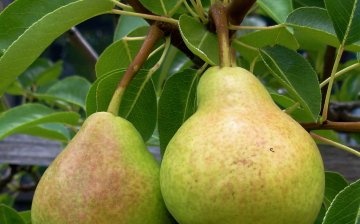
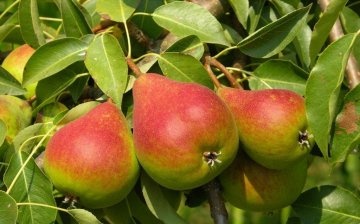

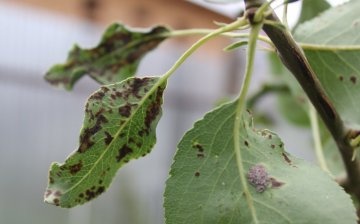

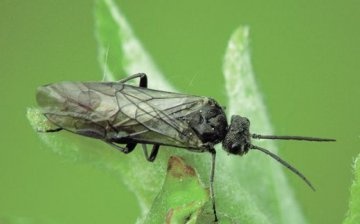
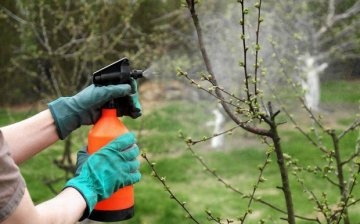

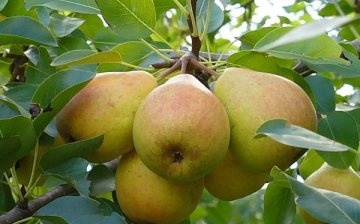









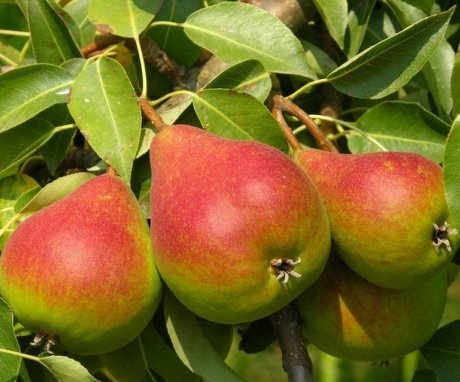
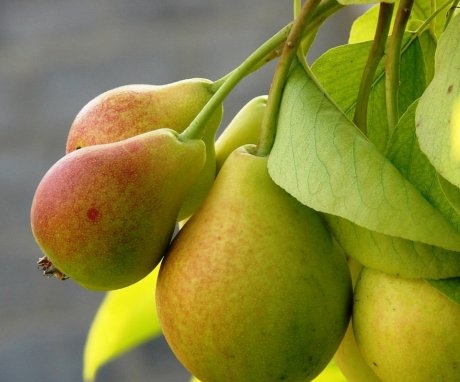

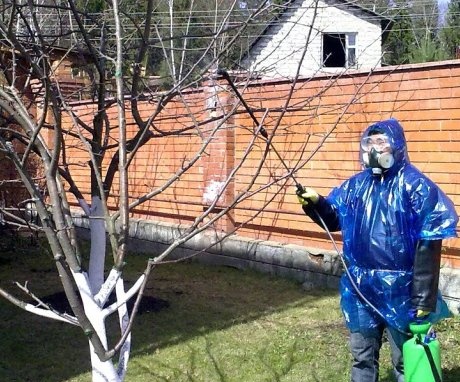

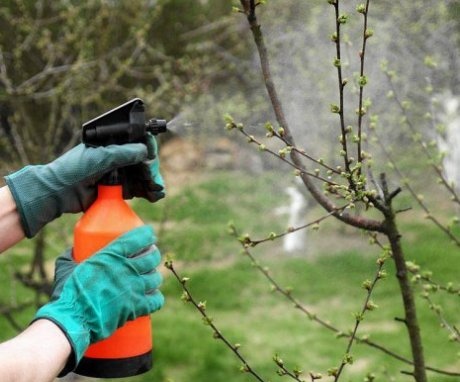
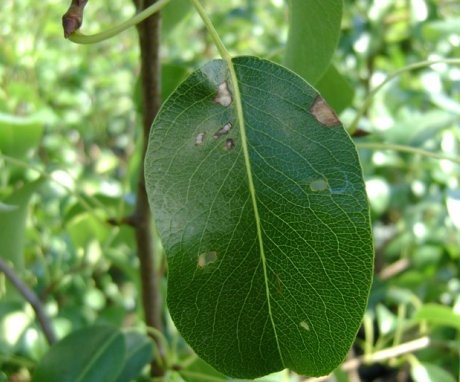
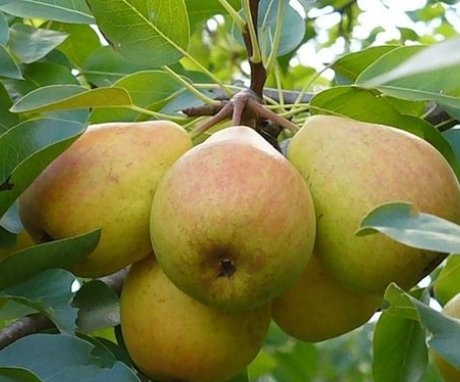
Our pear bears fruit, but only after a year. Apparently, the fruits are a big load for the tree, therefore. and so it happens. We do not fertilize the tree and do not cut it, perhaps, with such care, the harvest would be every year.
When we bought a pear, the nursery offered to buy two different varieties, so that when two are planted here, they bear fruit every year. We do not do pruning, do not fertilize. Only water if the summer is hot.
Many times I came across the fact that pear trees do not have enough iron in order to start bearing fruit. Sometimes it helps just to hammer a couple of nails into the trunk. Although I myself am very surprised at the effectiveness of this method.